
Jean Louis Allard Dies
May 17, 1847
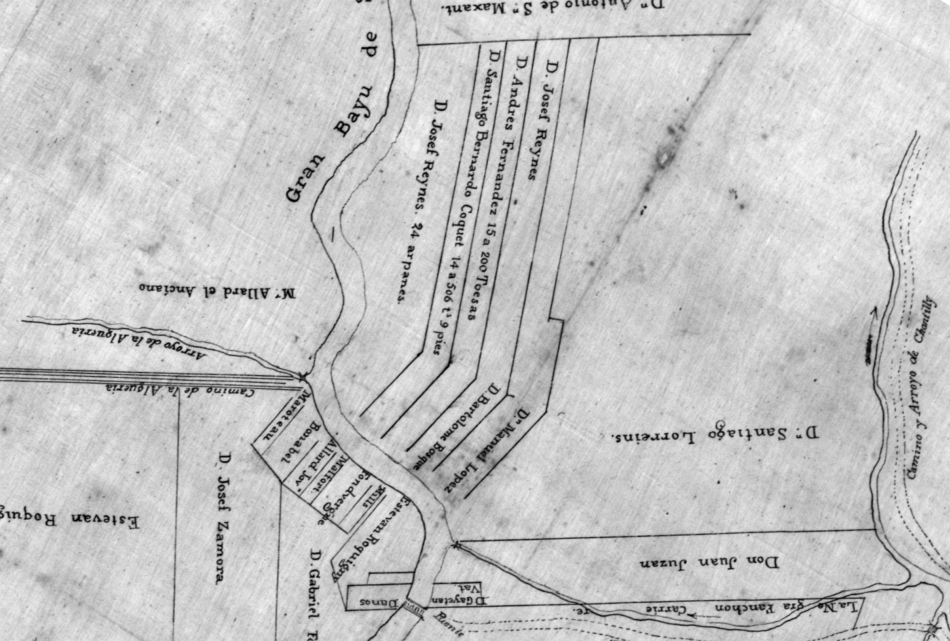
Five years after New Orleans was founded, the land which
would be City Park was deeded to Francisco Hery in a 1723 French colonial concession. Some fifty years later, during Spanish
rule, his widow sold the property to Don Santiago Loreins who would leave it to his daughter and son-in-law, Jean Louis
Allard (born in 1777). The 1819 Spanish map above shows Allard's land (left of center), Bayou St. John (“Gran Bayu
de sn Juan”), Bayou Metairie (“Arroyo de la Alqueria”), and Metairie Road (“Camino de la Alqueria”).
Below iit s a modern map showing approximately the same area (Metairie Road, in this section has been renamed City Park Avenue).
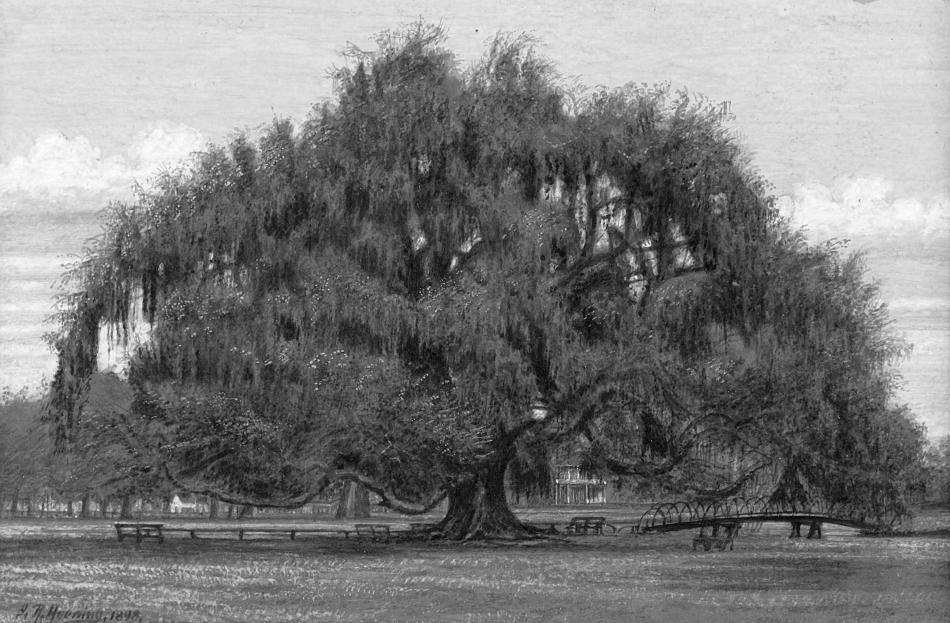
Almost a century and a half ago Charles Gayarré wrote in his 1867 History of
Louisiana, “On the bank of Bayou, or river St. John, on the land known in our days as Allard's plantation, and
on the very site where now stands the large and airy house which we see [shown here], there was a small village of friendly
Indians. From the bank opposite the village, beginning where at a much later period was to be erected the bridge which spans
the Bayou, a winding path made by the Indians, and subsequently enlarged into Bayou Road by the European settlers, ran through
a thick forest, and connected the Indian village with the French settlement of New Orleans”. Pictured is Julius Robert
Hoening's 1898 painting by titled Plantation and Oak Tree (Allard Plantation). The house fronted Bayou St. John
near Bayou Metairie. The 1910 photo on the following page offers a similar vantage point. The property was used primarily
as a dairy farm. (Photo from the Ogden Museum of Southern Art)
Louis Allard was educted
in France and returned home in 1798. On January 19, 1798, at the age of 21, he was appointed syndic
(a Spanish term for a representative) of Bayou St. John by Spanish Governor Gayoso. When the French regained control
of the city, Allard was named to the Municipal Court by Governor Laussat. His duties included inspecting Charity Hospital,
serving on the board of health regulating bakeries, and regulating roads and levees in the district of Metairie, Bayou St.
John, and Gentilly. In 1806, he was a captain in the militia of the Territory of Orleans. Allard was also a state representative
for the Parish of Orleans from 1824-1826 and in 1831-1832. He was anti-Andrew Jackson and anti-John McDonogh.
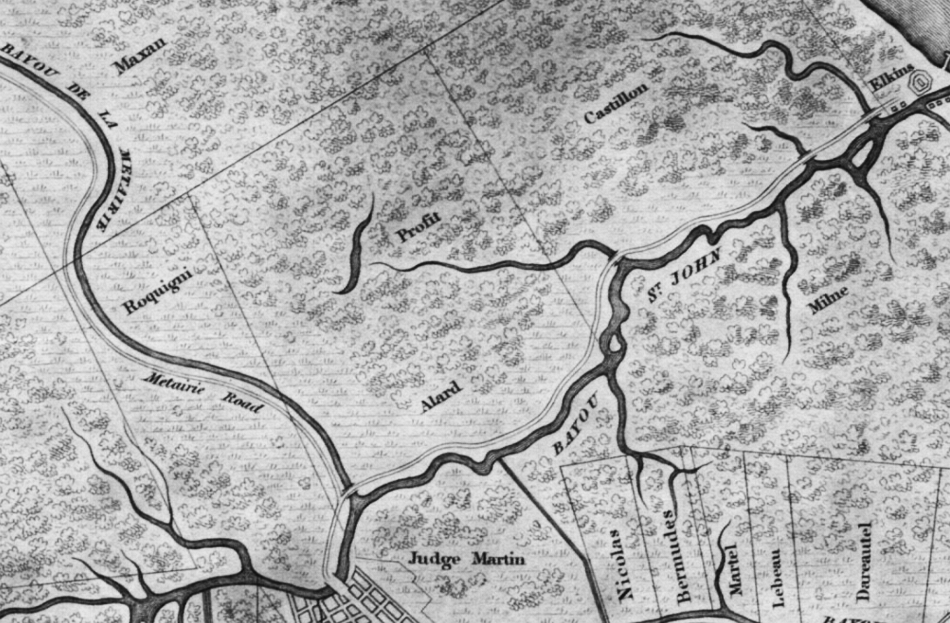
This 1828 map shows Allard's diminished property (lower center), as well as Bayou St.
John flowing to Lake Pontchartrain (where a port with a lighthouse and Harvey Elkin's popular Spanish Fort Resort were thriving),
Metairie Road (now City Park Avenue), Bayou Metairie, and Alexander Milne's property (which would soon boom as the Pontchartrain
Railroad's Smokey Mary began its run in 1831) east of the Bayou St. John to the lake.
An
1829 mortgage description of Jean Louis Allard's property indicates that it included a two-story master house on 18 arpents
fronting Bayou St. John, bounded by Metairie Road (which was renamed City Park Avenue in 1902) for 53 arpents on the ridge
which runs three feet above sea-level. Allard grew corn and sugar cane but used the land primarily as a dairy farm with
40 cows. Preferring to use his time in intellectual pursuits he had little interest in business and slowly lost portions
of the property until all was sold or auctioned for taxes – which is how John McDonogh acquired the property which
he willed to the city.
An 1845 Sheriff's sale resulted in the loss of 654 acres, 19
slaves, 10 horses and mules, 140 head of cattle -- all bought by John McDonogh for $40,000. After McDonogh purchased the property
in 1845 he allowed Allard to live the remainder of his life there. He died on May 17, 1847 in the year his collection
of poetry Les Epaves was published. It was often said that he was buried in a quiet spot under a favorite tree (the
Dueling Oak, shown here in the 1880s) however St. Louis Cathedral records indicate that Allard was buried on May 18,
1847 in St. Louis Cemetery #2, site #16. (Photo from the Library of Congress)
Despite the myth that Allard's body lay in a tomb under the oak became ingrained in the memory
of many New Orleanians. In 1904 the City Park Commission entertained the notion of adding an inscription to it, which
would read "Robert Allard [Louis' brother], Died 1837". Superintendant Victor Anseman noted that the year
of death was inaccurate. Another board member objected because, he said, no Allard family members had ever been buried
there. Felix Dreyfous thougt it best to leave things be, thinking that no inscription would allow visitors to keep the
mystery alive. In 1908 the commission discussed placing a fence around the tomb, indicating that it was a valuable feature
of the park. City Park's keepers maintained the tomb for more than a century. In fact, the tomb appeared to be in better
condition during the 1930s than it did in the 1890s. The to "tomb" was recently removed.
On October 31, 1860, Allard's remaining land was up for Sherriff's auction.
It was described as "Fronting the park and partly on Metairie Road with Bayou St. John and the Orleans Canal. 40
arpents front on Metairie Road. Depth 18 arpents (a French unit of measure slighlty smaller than an acre) on each side
45 arpents on rear line. except City Park, formerly Allard's Place and a parcel of land n Bayou St. John. Will
be sold as a bloc, and subject to a lease which includes the user of 16 negroes. $1600 per annually. Sold to John
McDonogh".
Allard's land evolved to
become one of the largest and oldest public parks in the nation -- New Orleans City Park. Filling 1,300 acres it is 457 acres
it is larger than New York's Central Park. Its age allows for the display of the many architectural styles which came into
vogue during its history – neo-classical, art nouveau, art deco, arts and crafts, mission, and modern
Hurricane Katrina caused extensive damage to City Park but the old tomb remained until September, 2011 when the City
Park Improvement Association removed it. A member of the board of directors stated that it was a "hazard".
John Hopper, Chief Development Officer, said that Allard had never been buried there, therefore it was of no historic
value, thus the decision was made to remove all traces of it. The Dueling Oak is still, fortunately, there.
From New Orleans City Park (Images of America) by Catherine Campanella.
May 17, 1954
A fire along Airline Highway
and the Brown v. Board of Eduction decision were the top news stories in the Times-Picayune May 18, 1954 edition. Both
of these had occurred the day before, on May 17.
Brown v. Board
of Education, 347 U.S.483 (1954), was a landmark United States Supreme Court case in which the Court declared state laws establishing
separate public schools for black and white students unconstitutional. The decision overturned the Plessy v. Ferguson decision
of 1896, which allowed state-sponsored segregation, insofar as it applied to public education. Handed down on May
17, 1954, the Warren Court's unanimous (9–0) decision stated that "separate educational facilities are
inherently unequal." As a result, racial segregation was ruled a violation of the Equal Protection Clause of the Fourteenth
Amendment of the United States Constitution. This ruling paved the way for integration and was a major victory of the civil
rights movement.
However, it was not until 1962, after Judge
Wright had issued a barrage of court orders neutralizing the Orleans Parish School Board's attempts at evading the Supreme
Court, that a handful of black students were admitted into previously all white public schools. Archbishop Rummel
praised Brown v. Board of Education, but he was reluctant to desegregate his own parochial school system. He had announced
his intention to desegregate the Catholic schools as early as 1956. However, most archdiocesan parish school boards had voted
against desegregation. After Bush v. Parish School Board, some parents had transferred their students from public schools
to parochial schools to avoid desegregation. A few local Catholics sent a petition to Pope Pius XII, requesting a papal
decree supporting segregation. The papacy responded by describing racism as a major evil. There was a very real threat
that the Louisiana State Legislature would withhold funding (for free textbooks, reduced lunches, and free buses for all
students in the state) from parochial schools if they desegregated. Archbishop Rummel formally announced the end of
segregation in the New Orleans parochial school system on March 27, 1962. The 1962-1963 school year would be the first integrated
school year in the history of the Archdiocese . (WIKI)
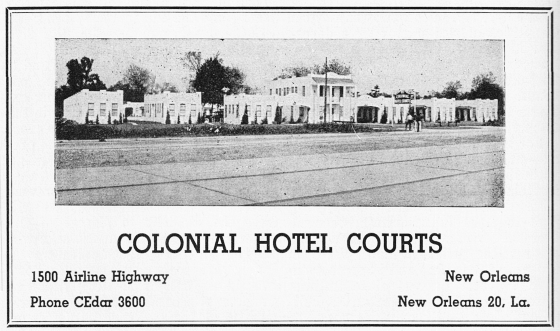
The fire in front of the Colonial Hotel Courts at 1500 Airline Highway, near Ridgewood Drive, started at 3:30 in the afternoon.
Traffic was halted during the blaze of undetermined origin which was fed by an oil soaked ditch. Twenty-five firemen from
Orleans and Jefferson Parish where hampered by a concrete and oil-soaked timber 50-foot cover over the ditch which was at
least five deep deep. Standard water hoses were useless, as they could not spray far enough into the ditch to contain the
fire. A load of dirt was dumped at the end of the cover to prevent the oil fueled fire from spreading farther along
the road. After drilling holes through the cover and inserting special nozzles inside, the fire was extinguished at
7:45, and the highway was reopened to traffic. Fire fighter Charles LeBlanc, of 453 Phosphor Street was treated at Charity
Hospital for smoke inhalation.
William Cahill, hotel manager,
first discovered the fire and attempted to put it out using the hotel's hand-held extinguisher after calling the fire department.
He reported that the fire burned so hot that the hotel front office, 20 feet away from the blaze, smoked and produced steam.
Jefferson Parish District Fire Chief Louis E. Breaux said that oil dumped
into the ditch by nearby filling (gas) stations fueled the fire which produced noxious black smoke. He said that he
would ask the parish Police Jury to pass an ordinance to prohibit disposal of oil from station operations. He feared
that otherwise, more fires would occur which would endanger nearby businesses and neighbors.
You Can Support this Site by Clicking on & Shopping from this Amazon Link -- and it
won't cost you a penny more:


The Southern Baptist Convention founded the institution as the Baptist Bible Institute during the 1917
convention meeting in New Orleans. New Orleans Baptist Theological Seminary, or NOBTS for short, was the first institution
created as a direct act of the Southern Baptist Convention and was located in the Garden District on Washington Avenue.
The institutes's purpose was centered on missionary work, and initially established as gateway to Central America. On May
17, 1946, the SBC revised the institutes' charter to enable it to become a seminary, and the name was changed to
New Orleans Baptist Theological Seminary. Missions and evangelism have remained the core focus of the seminary. The
Seminary started as the Baptist Bible Institute and relocated to a more spaciouse campus during the 1950s to the current
location in Gentilly after purchasing a 75-acre pecan orchard and transformed it into what is now a bustling campus over
100 buildings, including academic buildings, faculty and staff housing, and student housing. (WIKI)
Katherine Buckner Avery, public health nurse, civic leader. Born, New Orleans, May 17, 1896;
daughter of Daniel Dudley Avery and Katherine Buckner. Education: Touro Infirmary School of Nursing, graduated 1921.
Joined Louisiana Public Health Service, 1927; aided refugees of 1927 flood; first appointed staff nurse, Iberia Parish.
Re-tired to ancestral home on Avery Island, 1945. Founder: Iberia Parish Tuberculosis Association, 1929; Iberia Par-ish
Crippled Children's Association. Recipient, New Iberia Chamber of Commerce award for outstanding civic service. Honoree,
Distinguished Graduate, Touro Infirmary School of Nursing. Died, New Iberia, La., April 6, 1982; interred family cemetery,
Avery Island. G.R.C. Source: Obituary, New Iberia Daily Iberian, April 7, 1982. From http://lahistory.org/site18.php
Theodore "Parson" Clapp clergyman, social critic. Born, East Hampton,
Mass., March 29, 1792. Education: Yale, graduated 1814; studied theology at Andover, 1818-1819, and ordained in Easthampton,
1822. Departed New England during same year for New Orleans. Became pastor of the city's First Presbyterian Church. At
first maintained a strict Calvinist theology, but in 1834 organized "the Church of the Messiah" (Congregationalist)
with the help of some of his loyal followers. Acquired reputation as a "Universalist," and his church was loosely
referred to as New Orleans' "Unitarian Church." Preached that Christ was of divine origin; yet disputed the concept
of the Trinity and recognized the Holy Ghost only as a representative of a Supreme Godhead. With financial aid of his chief
patron, businessman Judah Touro (q.v.), Clapp led his congregation until departing in 1856. Clapp's liberal religious views
were tolerated in New Orleans because of his reputation as an "intellectual in residence" and his tact. Originally
an abolitionist sympathizer, he later adopted a moderate proslavery stance. His support of slavery was partly based on
his notions of the South's need of an orderly caste system in light of the African's supposed racial inferiority. Other
social and religious topics dear to Clapp's heart included the evils of rampant materialism, the myth of eternal damnation
to sinners, the idea of a spiritual elect, the evils of the fundamentalists' revivals, and the dangers of literal Biblical
interpretation. Clapp usually maintained closer personal and intellectual ties with New Orleans' Roman Catholic clergymen
and its Jewish rabbis than with his own Protestant colleagues. Clapp attained nationwide fame and even met with European
intellectuals whenever he traveled abroad. He was often praised for his valiant efforts whenever the city endured recurring
epidemics of yellow fever and cholera. For the antebellum traveler, the chief attractions of the Crescent City reportedly
were the French Opera, the American Theater, and "Parson" Clapp's church. A typical congregation included a segregated
local audience of liberal-minded whites and free-blacks, together with visiting planter-merchants and professional men.
Several of Clapp's sermons were published in both Northern and Southern newspapers. Among the most famous was "Slavery:
A Sermon Delivered in the First Congregational Church in New Orleans, April 15, 1838." Due to advanced age and ill-health,
Clapp moved upriver to Louisville, Ky., where he died on May 17, 1866. Although various successors filled
his pulpit, the local congregation faded from New Orleans shortly after the close of the Civil War. His best known work
is Autobiographical Sketches and Recollections of a Thirty-five Year's Residence in New Orleans (1857). From http://lahistory.org/site20.php
A House of Refuge for juvenile offenders was established in the Second Municipality of the city by ordinance
#1104, dated April 29, 1845. Eight citizens chosen annually by the Council were to serve as its Board of Commissioners along
with the Mayor, Recorder, and members of the Council's Committee on the Workhouse and Prison. The Board was to care for and
educate the inmates as well as to find suitable work with which to occupy them. Following consolidation of the city in 1852,
this institution became the House of Refuge for the entire city by ordinance #33, dated May 17, 1852.(NOPL)
By ordinance of May 17, 1836, the First Municipality Council provided for a civil engineer
to oversee the various public works within the boundaries of the municipality. A new ordinance, passed on January 30, 1837,
established an "office of public works and Surveyor's department," to consist of the Surveyor, a deputy, a clerk
for the office, and "other officers or persons employed in the attributes of said department," all under the control
of the Surveyor. The Surveyor was required to furnish security in the amount of $20,000 for the faithful performance of his
duties. Among those employed by his office were superintendents of the carts and of the works; a store keeper; a carpenter
and two assistants; several overseers; and a paver. (NOPL)
At a meeting of the Cabildo on May 17, 1792, the Lieutenant Governor asks the Attorney
General to determine a price at which the bakers may sell bread at a profit without detriment to the public.








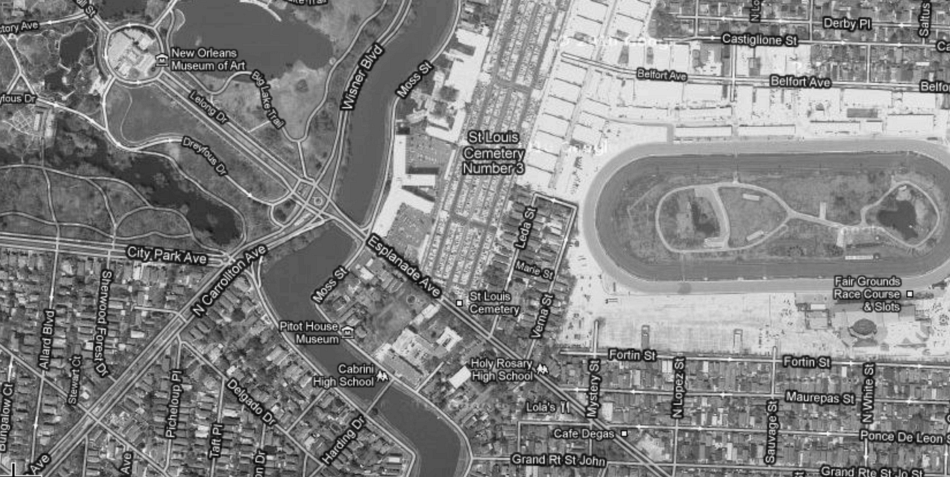


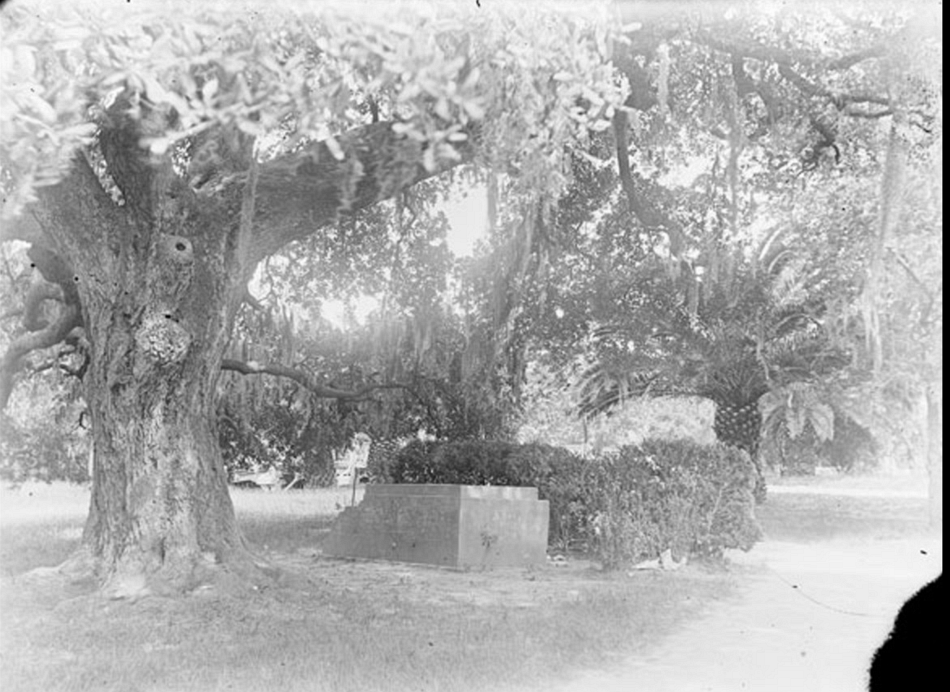
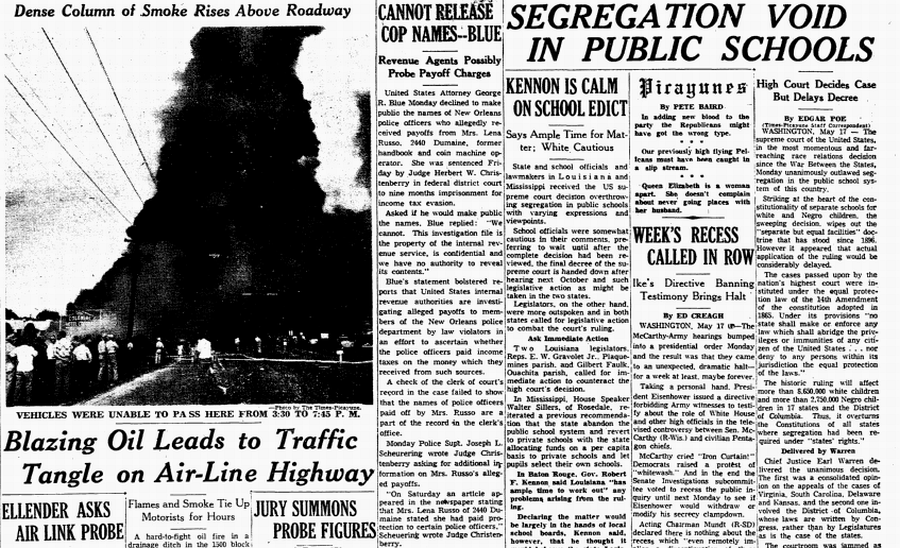
 The fire in front of the Colonial Hotel Courts at 1500 Airline Highway, near Ridgewood Drive, started at 3:30 in the afternoon.
Traffic was halted during the blaze of undetermined origin which was fed by an oil soaked ditch. Twenty-five firemen from
Orleans and Jefferson Parish where hampered by a concrete and oil-soaked timber 50-foot cover over the ditch which was at
least five deep deep. Standard water hoses were useless, as they could not spray far enough into the ditch to contain the
fire. A load of dirt was dumped at the end of the cover to prevent the oil fueled fire from spreading farther along
the road. After drilling holes through the cover and inserting special nozzles inside, the fire was extinguished at
7:45, and the highway was reopened to traffic. Fire fighter Charles LeBlanc, of 453 Phosphor Street was treated at Charity
Hospital for smoke inhalation.
The fire in front of the Colonial Hotel Courts at 1500 Airline Highway, near Ridgewood Drive, started at 3:30 in the afternoon.
Traffic was halted during the blaze of undetermined origin which was fed by an oil soaked ditch. Twenty-five firemen from
Orleans and Jefferson Parish where hampered by a concrete and oil-soaked timber 50-foot cover over the ditch which was at
least five deep deep. Standard water hoses were useless, as they could not spray far enough into the ditch to contain the
fire. A load of dirt was dumped at the end of the cover to prevent the oil fueled fire from spreading farther along
the road. After drilling holes through the cover and inserting special nozzles inside, the fire was extinguished at
7:45, and the highway was reopened to traffic. Fire fighter Charles LeBlanc, of 453 Phosphor Street was treated at Charity
Hospital for smoke inhalation. 
